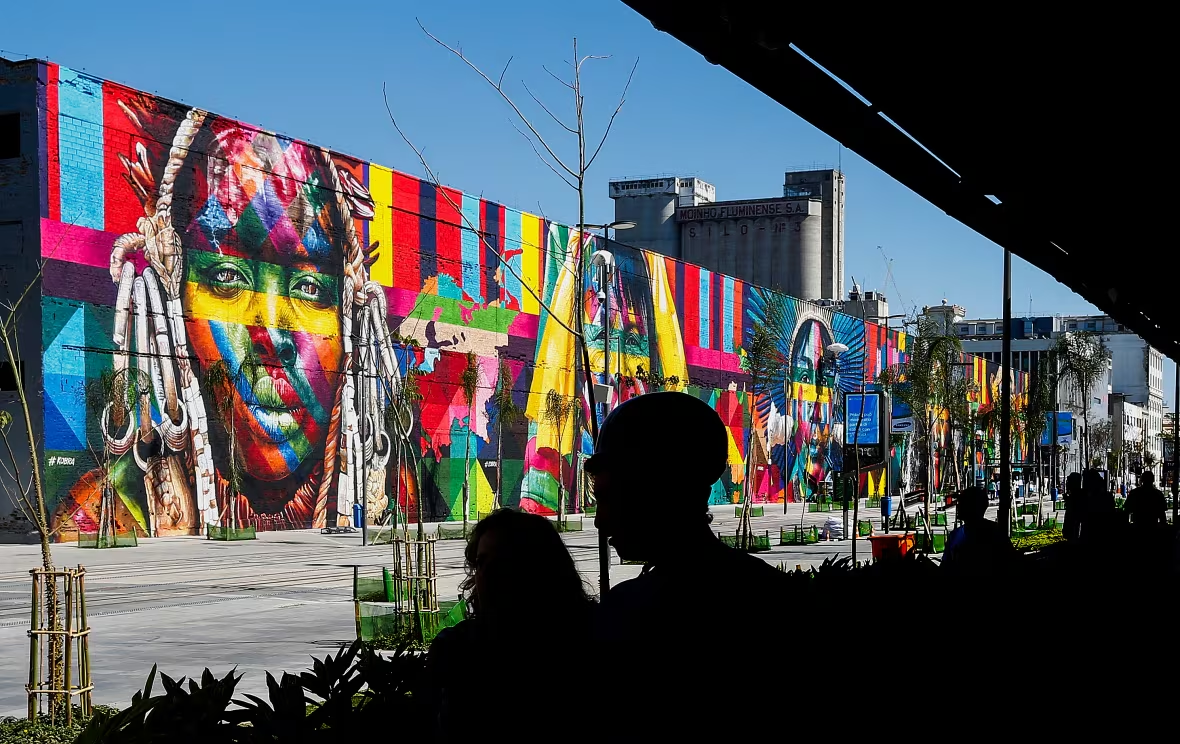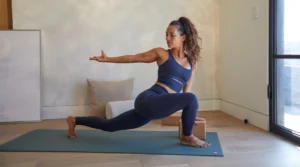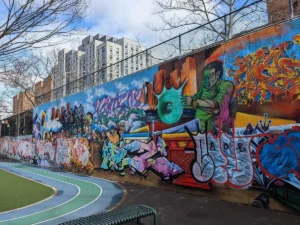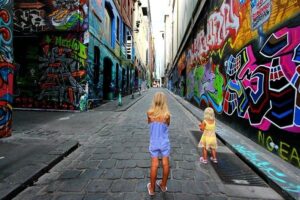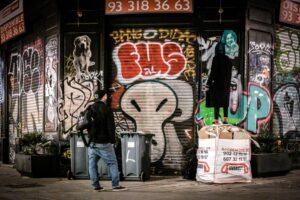Introduction to a Monumental Achievement
In the heart of Rio de Janeiro, where the rhythm of samba meets the roar of Olympic crowds, Brazilian street artist Eduardo Kobra painted a masterpiece that captured the world’s attention. His mural, Etnias (The Ethnicities), created for the 2016 Rio Olympics, wasn’t just art—it was a statement. Spanning over 32,000 square feet, it earned a Guinness World Record as the largest spray paint mural by a team, a testament to Kobra’s vision and dedication. This article dives into the story behind this colossal artwork, exploring its creation, cultural significance, and lasting legacy.
Who Is Eduardo Kobra?
A Brazilian Street Art Icon
Eduardo Kobra, a 40-year-old artist from São Paulo, is no stranger to bold, colorful murals. His signature style—vibrant hues, geometric patterns, and a kaleidoscopic effect—has adorned walls in New York, London, Tokyo, and beyond. For the Rio Olympics, Kobra took on his most ambitious project yet, transforming a rundown warehouse in Rio’s port district into a global symbol of unity. His work reflects a deep commitment to social messages, blending artistry with purpose.
Kobra’s Artistic Journey
Kobra began as a graffiti artist in São Paulo’s streets, where he honed his craft amidst Brazil’s vibrant street art scene. His murals often tackle themes of history, culture, and human connection, earning him international acclaim. By 2016, Kobra was already a celebrated figure, but Etnias would elevate his legacy to new heights, showcasing his ability to merge scale with meaning.
The Creation of Etnias
A Vision for Unity
The mural, titled Etnias or Todos Somos Um (We Are All One), was commissioned by the International Olympic Committee to celebrate the 2016 Rio Olympics, the first hosted in South America. Kobra’s concept was simple yet profound: depict five indigenous faces, each representing a continent—Africa, Asia, Australia, Europe, and the Americas—mirroring the five Olympic rings. The mural aimed to convey that, despite our differences, humanity is interconnected.
The Scale of the Project
Spanning 190 meters long and 15.5 meters high, Etnias covered approximately 3,000 square meters (32,300 square feet) on an abandoned cinderblock warehouse in Rio’s Porto Maravilha, part of the revitalized Olympic Boulevard. The sheer size was daunting, but Kobra saw it as a challenge to amplify his message of unity. The mural’s location in a formerly neglected area also symbolized renewal, aligning with the Olympics’ spirit of transformation.
Materials and Effort
The creation of Etnias was a Herculean task:
- 100 gallons of white paint to prime the wall
- 400 gallons of colored paint for the vibrant designs
- 3,500 cans of spray paint for intricate details
- Two months of 12-hour workdays
Kobra and his team worked tirelessly, often under the scorching Rio sun, to complete the mural before the Olympic opening ceremony. The warehouse’s dilapidated state required extensive preparation, including washing and repairing the wall before painting could begin.
The Artistic Process
Kobra’s process was meticulous. He spent weeks researching indigenous cultures to ensure authentic representation. He created over ten experimental sketches before finalizing the design, which featured:
- A Tajapo boy from Brazil
- A Mursi woman from Ethiopia
- A Kayin woman from Thailand
- A Supi man from Northern Europe
- A Huli man from Papua New Guinea
Each face was rendered in Kobra’s signature style—bold colors, quilted geometric shapes, and a photorealistic quality that made the figures leap off the wall. The mural’s scale was so vast that Kobra used cranes and scaffolding to reach every corner, turning the warehouse into a canvas of global harmony.
Cultural and Symbolic Significance
A Message of Unity
Kobra’s mural wasn’t just about aesthetics; it carried a powerful message. “We’re living through a very confusing time with a lot of conflict,” Kobra said in an interview with the Rio 2016 website. “I wanted to show that everyone is united, we are all connected.” By depicting indigenous faces, Kobra honored humanity’s shared roots, aligning with the Olympic values of respect, friendship, and excellence.
Tying to the Olympic Spirit
The five faces corresponded to the five Olympic rings, each color symbolizing a continent. This connection wasn’t just visual—it was philosophical. The Olympics bring together athletes from diverse backgrounds to compete in harmony, and Etnias mirrored this by celebrating cultural diversity. Located along the Olympic Boulevard, the mural became a focal point for visitors, embodying the Games’ ethos of global unity.
Revitalizing Rio’s Port District
The mural transformed a derelict warehouse into a vibrant landmark, contributing to the revitalization of Rio’s Porto Maravilha. Once a run-down area, the Olympic Boulevard became a hub of art, music, and culture during the Games, with Etnias as its centerpiece. Kobra’s work not only beautified the area but also drew tourists, boosting local pride and economic activity.
The Challenges of Creating Etnias
Physical and Logistical Hurdles
Painting a mural of this scale was no small feat. The warehouse’s crumbling walls required extensive repairs, and the project demanded precise coordination. Kobra’s team worked 12-hour shifts, battling weather and fatigue. The use of cranes and heavy equipment added complexity, but Kobra’s determination kept the project on track. His mantra, “I’m motivated by challenges,” became the driving force behind Etnias.
Balancing Scale with Detail
Maintaining artistic precision on such a massive canvas was another challenge. Kobra’s style relies on intricate geometric patterns and vibrant colors, which required careful planning to ensure consistency across 190 meters. The mural’s photorealistic faces demanded accuracy, as any misstep would be magnified by its size. Kobra’s experience as a street artist shone through, as he balanced bold strokes with delicate details.
Time Pressure
With the Olympic opening ceremony looming, Kobra faced immense pressure to finish on time. The two-month timeline was grueling, leaving little room for error. Yet, Kobra’s passion for the project and his team’s dedication ensured Etnias was unveiled just days before the Games began, earning global applause.
The Impact of Etnias
A Guinness World Record
Etnias earned a Guinness World Record for the largest spray paint mural by a team, a title later clarified to acknowledge Kobra’s leadership and vision. While some sources initially reported it as the largest mural by a single artist, the record reflects the collaborative effort of Kobra and his team. This achievement cemented Kobra’s place in street art history.
Global Recognition
The mural garnered international praise, featured in outlets like My Modern Met, Bored Panda, and Atlas Obscura. Social media amplified its reach, with Kobra’s Instagram posts showcasing the mural’s progress going viral. Visitors flocked to Olympic Boulevard to see Etnias, making it one of Rio’s must-visit attractions during the Games.
A Lasting Legacy
Though Kobra broke his own record in 2017 with a 5,700-square-meter mural in São Paulo, Etnias remains his most iconic work. It continues to draw tourists to Rio’s Olympic Boulevard, serving as a reminder of the 2016 Games’ spirit. The mural’s message of unity resonates in a world often divided, making it a timeless piece of public art.
Comparison: Etnias vs. Other Record-Breaking Murals
| Mural | Artist | Location | Size (sq. meters) | Year | Theme |
|---|---|---|---|---|---|
| Etnias | Eduardo Kobra | Rio de Janeiro, Brazil | 3,000 | 2016 | Unity, Olympic spirit |
| São Paulo Mural | Eduardo Kobra | São Paulo, Brazil | 5,700 | 2017 | Cultural heritage |
| Mazatlan Mural | Ernesto Rocha | Mazatlan, Mexico | 1,680 | Prior to 2016 | Local culture |
Analysis
Etnias stands out for its global message and Olympic connection, unlike the more localized themes of other record-breaking murals. Its scale and cultural impact make it a benchmark in street art, though Kobra’s São Paulo mural later surpassed it in size. The Mazatlan mural, while impressive, was nearly half the size of Etnias, highlighting Kobra’s ability to push boundaries.
Pros and Cons of Creating Mega-Murals
Pros
- Global Visibility: Large-scale murals attract media and tourists, amplifying the artist’s message.
- Cultural Impact: They can transform neglected areas and foster community pride.
- Artistic Challenge: Pushing creative and logistical limits leads to innovation.
Cons
- Physical Toll: Long hours and demanding conditions can exhaust artists and teams.
- High Costs: Materials and equipment for mega-murals are expensive.
- Time Constraints: Tight deadlines, like those for the Olympics, add pressure.
Exploring Rio’s Street Art Scene
Beyond Etnias
Rio de Janeiro is a haven for street art lovers. Beyond Etnias, visitors can explore:
- Escadaria Selarón: A staircase adorned with over 2,000 colorful tiles from 60 countries, created by Jorge Selarón.
- Santa Teresa: A bohemian neighborhood with art studios and galleries.
- Other Olympic Boulevard Murals: Works by artists like André Camila Cadiz and Rita Wainer.
Where to Experience Rio’s Art
For art enthusiasts, Rio offers a wealth of experiences:
- Museum of Modern Art (MAM Rio): Features contemporary Brazilian and international art.
- Centro Cultural Banco do Brasil (CCBB): Hosts diverse exhibitions in a historic building.
- Casa Roberto Marinho: Showcases a private collection of Brazilian art.
Best Tools for Street Art Enthusiasts
To capture or create street art like Kobra’s, consider these tools:
- Spray Paint: Brands like Montana or Molotow offer vibrant, durable colors.
- Photography Gear: A DSLR or mirrorless camera (e.g., Canon EOS R5) for high-quality mural shots.
- Art Apps: Procreate for digital sketches or Adobe Fresco for on-the-go designs.
People Also Ask (PAA)
What is the largest street art mural in the world?
The largest street art mural by a team is Etnias by Eduardo Kobra, created for the 2016 Rio Olympics, spanning 3,000 square meters. Kobra later broke this record with a 5,700-square-meter mural in São Paulo in 2017.
Who created the Etnias mural?
Eduardo Kobra, a Brazilian street artist, led the creation of Etnias with his team, earning a Guinness World Record for the largest spray paint mural by a team.
Where is the Etnias mural located?
The mural is on Olympic Boulevard in Rio de Janeiro’s Porto Maravilha, a revitalized port area.
What is the theme of the Etnias mural?
Etnias celebrates global unity, depicting five indigenous faces representing the continents symbolized by the Olympic rings.
FAQ Section
How long did it take to create Etnias?
Kobra and his team worked for two months, often 12 hours a day, to complete the mural before the 2016 Rio Olympics.
What materials were used for Etnias?
The mural required 100 gallons of white paint, 400 gallons of colored paint, and 3,500 cans of spray paint.
Is Etnias still the largest mural in the world?
No, Kobra surpassed it in 2017 with a 5,700-square-meter mural in São Paulo, but Etnias remains iconic.
Can I visit the Etnias mural today?
Yes, the mural is still accessible on Olympic Boulevard, a popular spot for tourists and art lovers.
How does Etnias reflect the Olympic spirit?
The mural’s depiction of diverse indigenous faces mirrors the Olympics’ values of unity, respect, and global connection.
A Personal Reflection
Standing before Etnias during a trip to Rio, I was struck by its sheer scale and emotional weight. The faces seemed to gaze into your soul, reminding you of our shared humanity. It’s the kind of art that stops you in your tracks, making you forget the chaos of the world for a moment. Kobra’s ability to blend vibrant colors with a universal message is nothing short of inspiring, and it’s a reminder that art can bridge divides in ways words often can’t.
Conclusion: A Lasting Symbol of Unity
Eduardo Kobra’s Etnias is more than a mural—it’s a celebration of humanity’s shared roots and a testament to the power of art to unite. Created under intense pressure for the 2016 Rio Olympics, it transformed a neglected corner of Rio into a global landmark. Its record-breaking scale, vibrant colors, and profound message continue to resonate, drawing visitors to Olympic Boulevard years later. For art lovers, travelers, or anyone seeking inspiration, Etnias is a must-see, a reminder that, as Kobra says, “we are all connected.”
For more on Kobra’s work, visit his official website or explore Rio’s art scene at Visit Rio.
